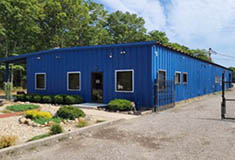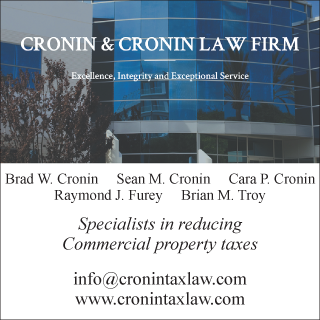Comm’l Classroom: Pandemic marketing – Back to basics - by Edward Smith

This column is offered to help educate agents new to commercial and investment brokerage and serve as a review of basics for existing practitioners.
As a result of the COVID-19 virus there are many opportunities for commercial real estate agents to help struggling businesses and themselves. Businesses may be looking to downsize by moving or by sub-leasing some of their space if stuck in a lease. Some maybe facing closure and are looking for a replacement tenant for themselves to entice the landlord to release them from their lease obligations. How do we find out? We talk to them—the old fashion way, face-to-face. Visit businesses in town, using social distancing and wearing masks. See if you can be of assistance to them.
Note: New York State still has a ban on “Cold Calling” but that is specific to phone calls.
This in-person “cold calling” is a business building activity we should have been doing before the pandemic arrived. Basic marketing “101” tells us to spend some time each day prospecting business for the future. One technique is to systemically go door to door introducing yourself to all tenants and building owners in town. Visiting a minimum of just two business a day, that’s 10 a week, 40 a month, new prospects. Meeting current tenants and owners now may be timely to help them, and it helps develop your presence in the community as “the commercial go-to person.”
Now that you have made initial contact you want to stay in touch. If you meet a business owner who is a tenant determine when their lease is up. To catalog this valuable information you can buy all sorts of software programs or you can simply use the “word” and calendar programs found on most computers.
You’ve determined their lease is up in two years. Enter this information in your calendar program, and follow up on this six months prior to the lease expiration. However, you also want to regularly stay in touch, so enter a follow up visit date in 3-4 months; these subsequent visits continue to develop your relationship with the potential client. With each visit end by asking for a referral “is there anyone else you know, that I may be able to help?”
If when their lease expires they decide to stay in their location, consider them a source of referrals or a potential buyer (more on that in a moment) until they need to move.
Just because someone signs a five- or 10-year lease, does not mean they will stay there the entire time. Business is booming and they need more space; or things are slow and now they need less space. We can help them find new space and possibly sub-lease the space they are in. (and get paid for it!). By repeat visits–if they need to make a move–you are top of mind and you get the call.
Each time you catalog a building set up a simple “word document” about the potential client you just met. Include whatever information you have gathered, name, address, owner or tenant, type of business, how much space they occupy, when they expect to move and lease expirations. Include any personal information they shared with you about their family, etc. You learn they are going on vacation next month. Keep this chronological record of activity for each call or visit. Before you talk to them again, consult your log. You may want to begin your conversation with a question like, “How was your vacation? This type of personalization develops relationships.
In your initial visit you learned they lease 2,500 s/f of retail space. Set up files in your computer by size: for example, retail tenants leasing 1,000 – 2,000 s/f, 2,000 - 3,000 s/f, etc. When you list a retail building for sale in the area a bit larger, say 4,000 s/f, email the opportunity, to all your retail tenants leasing space less than that, they may be ready to buy! Do the same thing for office and industrial tenants.
Don’t forget about building owners—in prospecting you meet the building owner, they may have their business in this building or not; either way they are an investor. Your investor files can be cataloged by size, price category or both. Get those new investment listings out to these buyers.
Taking the extra time to really catalog all you learn, leads to future business.
Edward Smith. Jr. CREI, ITI, CIC, GREEN, MICP, CNE, e-PRO and CIREC program developer, is a commercial and investment real estate instructor, author, broker, speaker and a consultant to the trade.
Suffolk County IDA supports expansion of A&Z Pharmaceuticals


The evolving relationship of environmental consultants and the lending community - by Chuck Merritt
When Environmental Site Assessments (ESA) were first part of commercial real estate risk management, it was the lenders driving this requirement. When a borrower wanted a loan on a property, banks would utilize a list of “Approved Consultants” to order the report on both refinances and purchases.









.jpg)